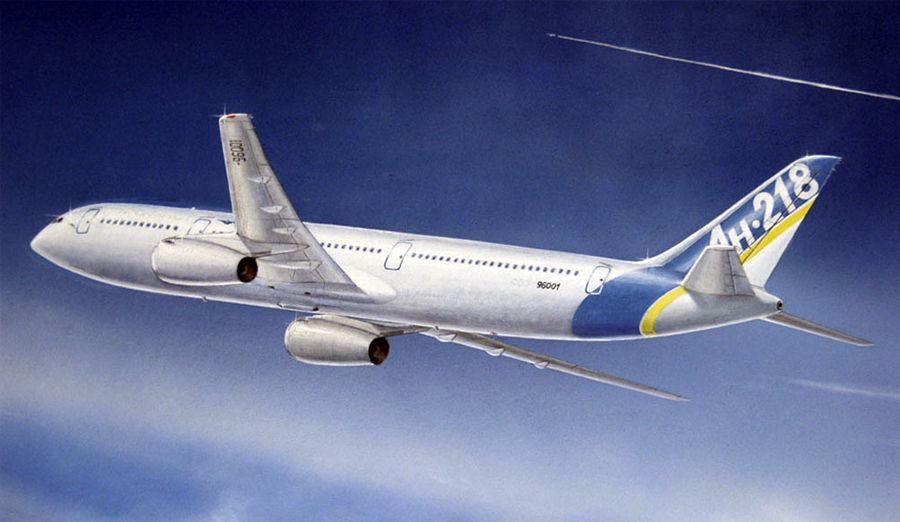Boeing’s twinjet widebody 777 airliner has been gracing the world’s skies since the mid-1990s. Its main competitors have always been the A330 and A340 models produced by European manufacturer Airbus. However, it nearly ended up also seeing competition from a Ukrainian design, namely the proposed Antonov An-218. But what exactly is the story of the 777 competitor that never was?

The story of the An-218
Ukraine became an independent nation in 1991, following the breakup of the former Soviet Union. Global Security reports that this period coincided with the country’s Antonov Design Bureau completing its designs for two proposed passenger airliners. These were the An-180 and the An-218, with the latter being designed to serve as a competitor to the American Boeing 777.
With Ukraine wishing to move forwards with its technological development having gained its independence, the An-218 was planned to feature several advanced aspects. These would have helped it to be considered a competitive alternative to the Boeing 777.

The proposed features included “modern avionics, including an electronic display system,” as well as “new high-strength light alloys, composite materials, and optimal design technological solutions.” Among the purposes of these innovations was to improve the aircraft’s weight.
The An-218’s planned capacity was 300 passengers in a three-class configuration, or 350-400 in a one-class setup. Economy seats were to have a pitch of 810mm, or 32.4 inches, which seems fairly generous by today’s standards.

A short-fuselage (200-220 passengers) version with an extended range of around 12,000km (6,500 NM) was also proposed. However, the aircraft never got beyond a full-size wooden model being developed. Experts had pointed out numerous technical failings in its design, and, ultimately, the project’s funding was discontinued in 1994.
Specifications
The planned specifications in various crucial performance metrics were as follows. The equivalent specifications for the Boeing 777-200LR are in the adjacent italic brackets for comparison.
- Length – 58.15m (63.7m)
- Wingspan – 50m (64.8m)
- Height – 15.6m (18.6m)
- Wing area – 270 sq m (436.8 sq m)
- Capacity – 300 in three-class / 350-400 in one-class (317 in two-class)
- Range – 7,200km / 3,900 nm (15,800km / 8,500 nm)
- Cruise speed – Mach 0.7 / 850-870km/h / 530-540mph (Mach 0.84 / 890km/h / 550mph)

It should be noted that the Boeing 777 has had the benefit of further development since its inception. This has culminated in the impressive statistics displayed for the above -200LR model. While the An-218 may also have experienced such development had it reached production, it is clear that it would have had a lot of catching up to do to match the 777.
Antonov’s other passenger airliners
Antonov is mainly known nowadays for its enormous cargo aircraft. In the An-225 and An-22 it has produced both the heaviest aircraft ever built and the world’s largest turboprop airliner respectively. However, it has also produced several models of passenger airliner.

According to Airliner Spotter, these range “from the 27−seat turboprop Antonov An-38 to the An-148 and An-158 jets.” As can be seen in the photo above, the latter two have a similar high-wing design to the British Aerospace 146, which later became the Avro RJ series. A further quirk of the An-148 and An-158 is that they are the only regional and short-range aircraft certified for take-off and landing on unpaved runways.”
While the An-218 project ultimately proved a failure, Antonov’s production aircraft remain a subject of fascination for avgeeks worldwide.
[ad_2]
Source link


